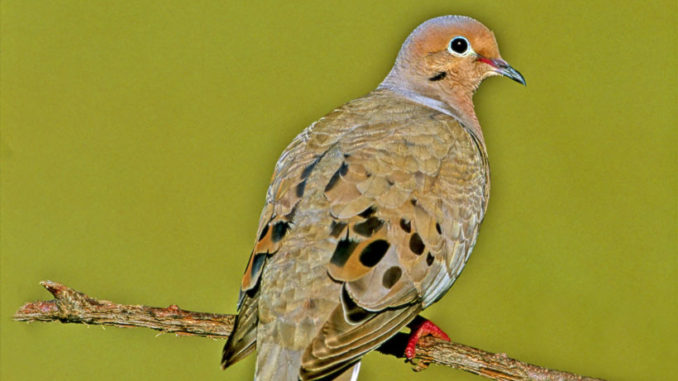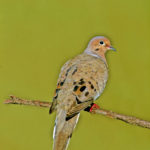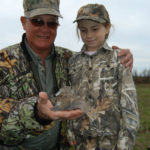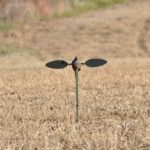
Good camo helps, but not as much as finding fields that will provide migrating doves a place to feed as they pass through North Carolina.
Long underwear: check.
Gloves: check.
Camouflage coat: check.
Dove decoys: check.
Shells: 11/4-ounce, 12-gauge, 71/2s, check.
Dove stool, thermos of hot chocolate and ear protection: check.
When the third segment of North Carolina’s dove season opens again Dec. 13, most hunters will be hunkered down in a blind or tree stand, wearing long underwear, gloves and a camouflage coat, waiting on that late season deer or calling to waterfowl surfing in on a cold, north wind.
What they’re missing — especially if conditions are right — might be a great opportunity to shoot doves, while wearing thermal underwear. Two bird hunters from the Orange County community of Efland, separated in age by two decades, believe that the late season is the best time for a dove hunt.
“Back in the day — that is, 40 years ago — it was a rare thing for anyone to hunt doves late in the season; why would anyone want to waste time trying to hunt doves?” asked Lowrie Beacham. “I don’t know if it is global warming or changes in agriculture, but it seems like more doves are now overwintering up here.”
For noted decoy carver Andy Pope, late-season dove hunts are hybrid-style hunts that require fewer shotguns but more up-to-date scouting reports.
“The doves are often thick, especially over sown wheat fields or cut corn fields from the fall,” he said, noting the robust size of December birds. “We often call them ‘Yankee doves,’ which wickedly adds to the fun of shooting them.
“That said, they are still hard to hunt, unless conditions are unusually right. They are bigger and (there are) more of them, and still it takes an effort to keep them moving around a field.”
The key? Find the food, you find the doves. Both Lowrie and Pope look for fields where wheat has been sown or where corn was cut earlier in the fall.
“The key is to find places where vegetation is low and there is clean dirt, or where the doves are feeding on seed that has been planted,” Pope said.
When those kinds of fields are found, Lowrie and Pope agree that hunters must be better concealed than on a Labor Day weekend hunt.
“It is very important to be concealed and to use camouflage, as these birds are more mature,” Pope said.
And the camouflage coat the birds require you to wear is just perfect for the situation.
“The weather is often just ideal: leaves are falling or off, the skies are brilliant blue … the dog can run all afternoon without heat stroke,” Beacham said.
When the location of a congregation of doves is discovered, Pope and Beacham both agree that decoys, especially the Mojo decoy, is essential.
“I’ve had doves drop in by the dozen, just like ducks and geese, when two or three mojos are congregated in an area,” Pope said.
Beacham said decoys are essential because it’s not always easy to recruit a crew of hunters to leave their deer stands or the couch.
“The whirring of a Mojo, with a few stationary decoys around it, will often make a single dove at least veer off course to come within range; and it’s not at all uncommon for such birds to suddenly land right among the plastic versions. One or two of mine have holes in them from my shooting too soon at rising birds,” Beacham said.
The real gift for both hunters is also the opportunity to hunt doves in weather conditions that early season hunters never encounter, including snow.
“Once in a very long while — this happens more often in the December season — you get a sudden snowstorm,” Beacham said. “In such a case, I drop all other obligations and plow my way to a dairy farm, to get into the paddock where the cows gather before and after milking. They keep the ground clear with their trampling, and there is plenty of corn scattered around in their dried manure to lure in doves who can’t find other sources of food.
“I have had to deliberately confine myself to only one shell in the gun, to keep from limiting out in 30 minutes.”
Pope also believes a snow storm can bring out the best in doves, and with the season lasting until Jan. 11, it’s a possibility.
“If it is a bluebird sky, a decent wind and snow is on the ground or recently passed, I will abandon all house chores, decoy carving deadlines, and I will steal away into a virtually empty field and shoot plump doves that others hunters might have forgotten since opening weekend,” he said. “There is something about seeing the sun paint a pink exit in the sky, your familiar dog happy, and the chill in the air all the more tasty with a limit of doves in the bag.”






Be the first to comment